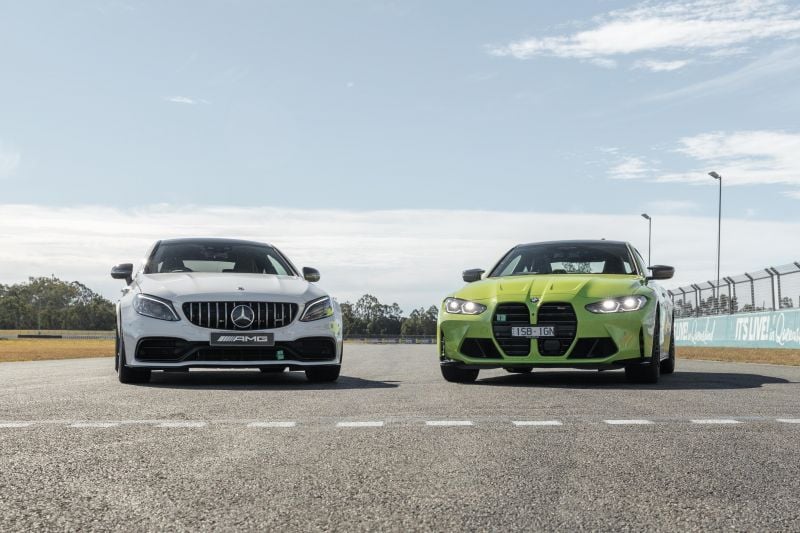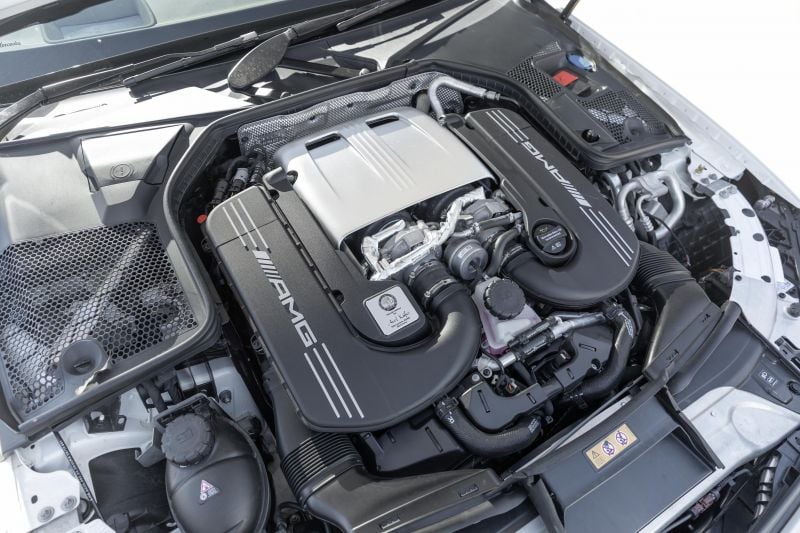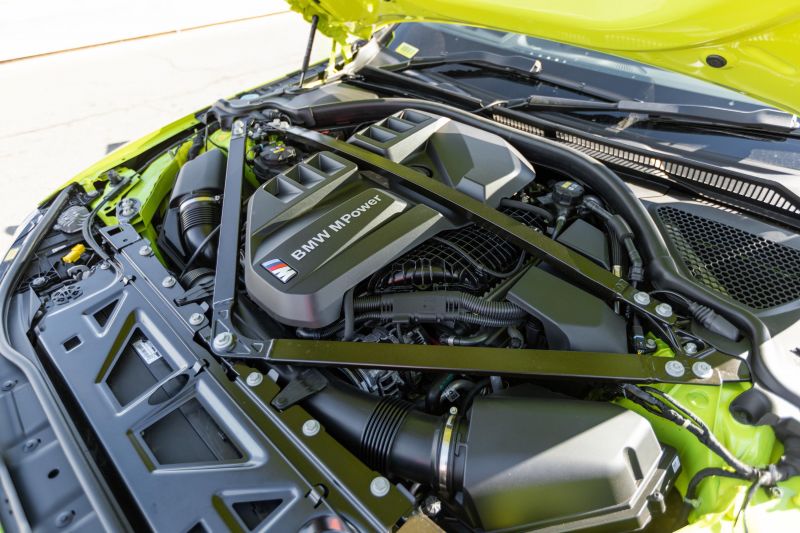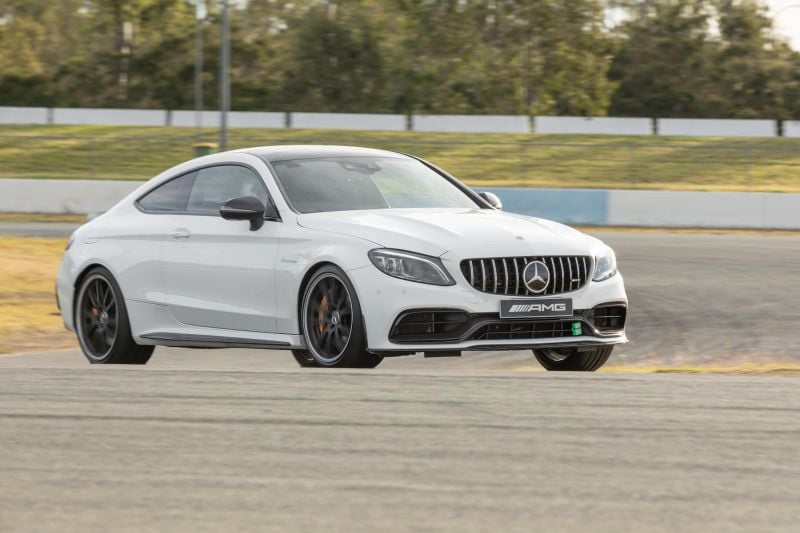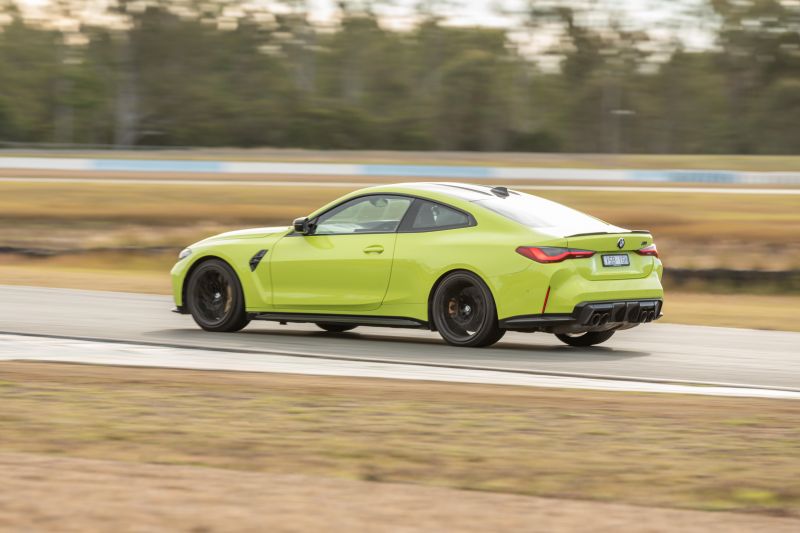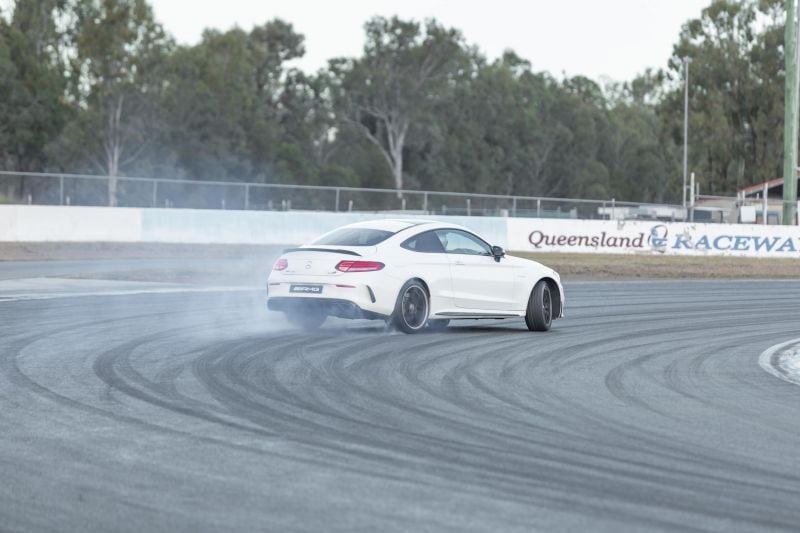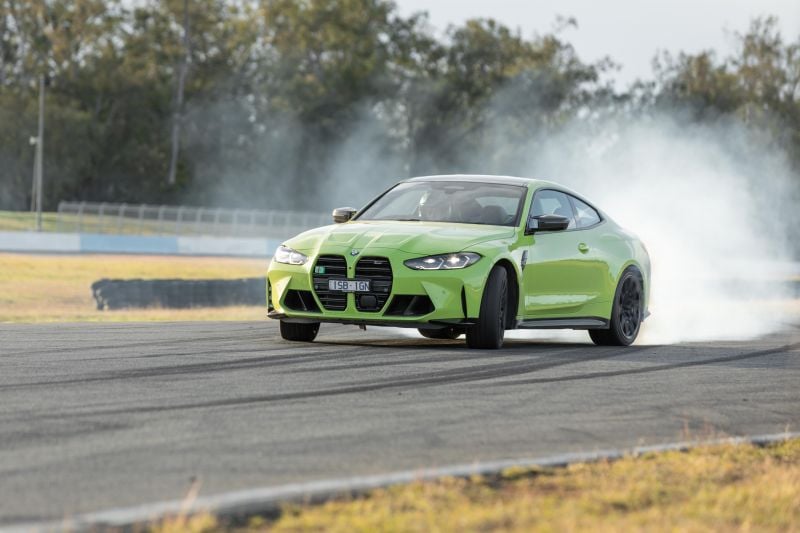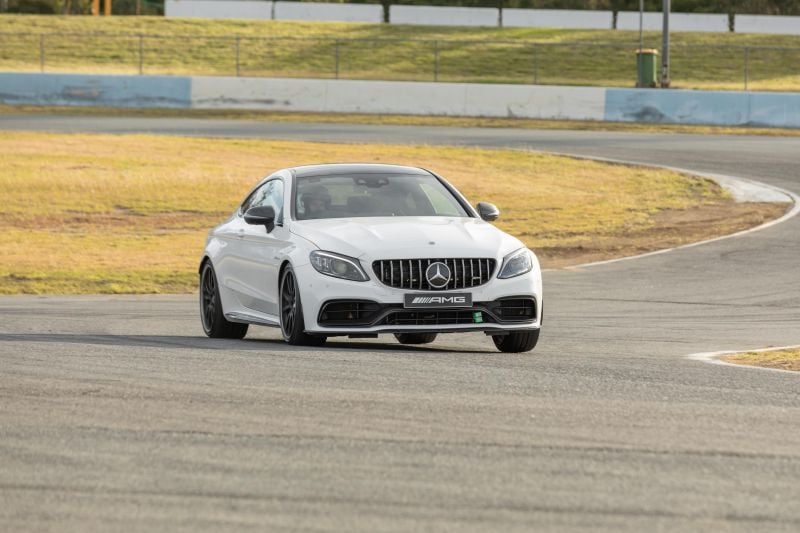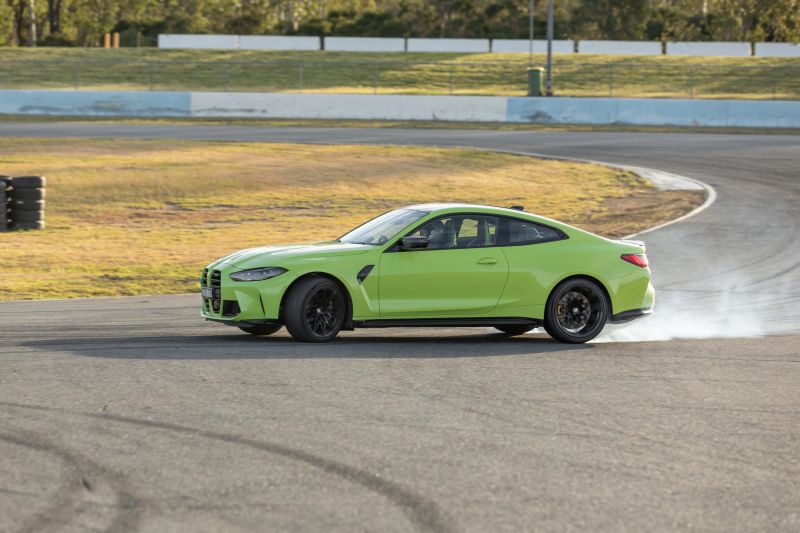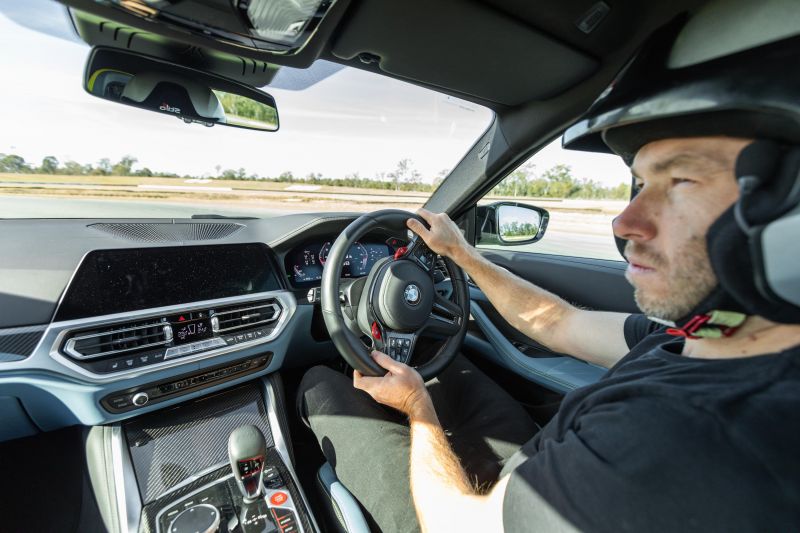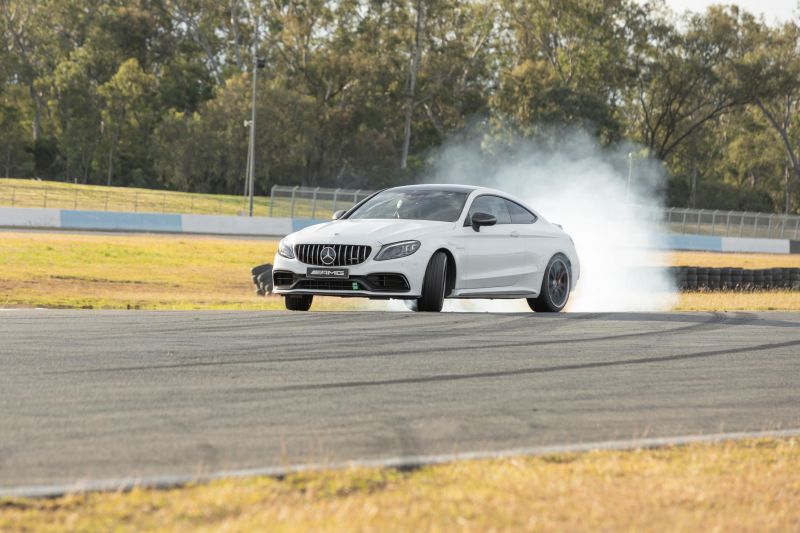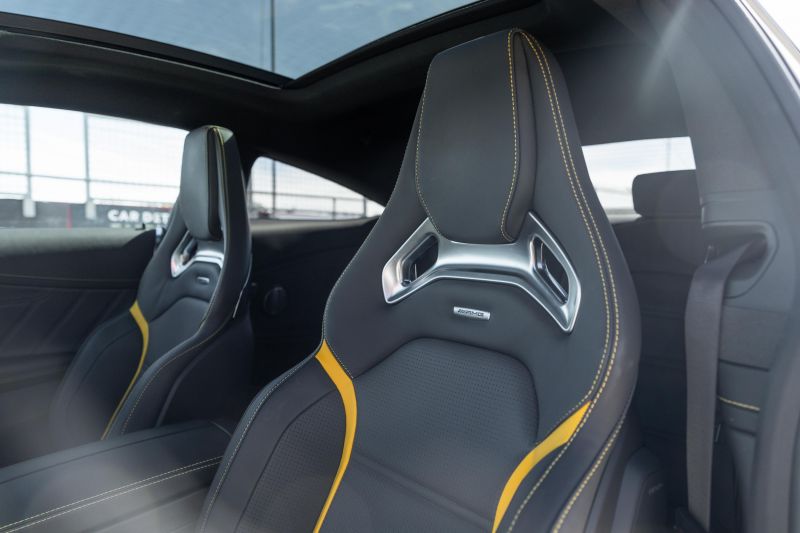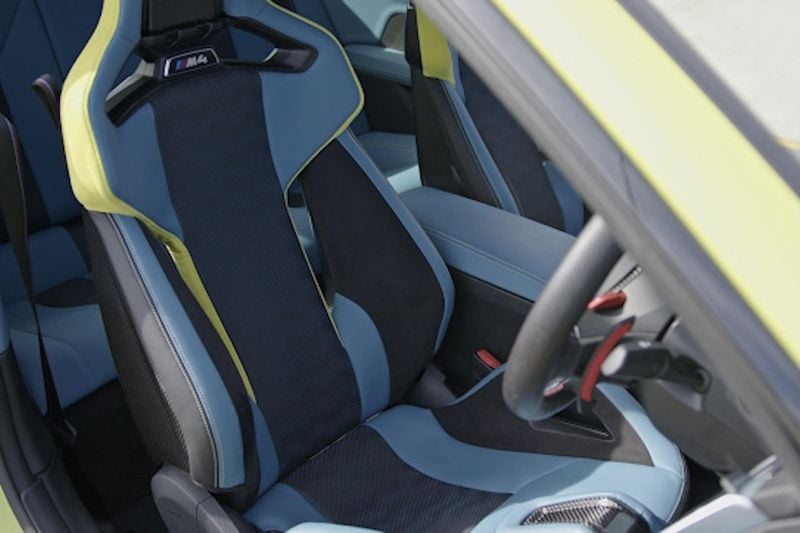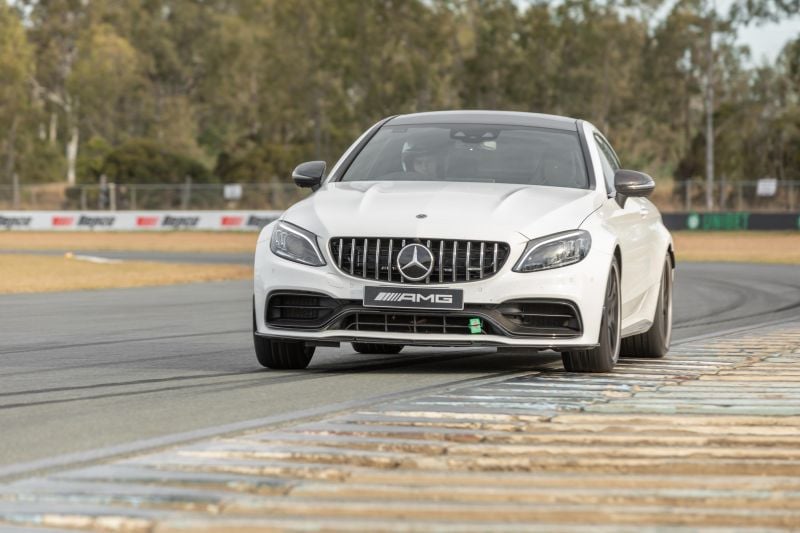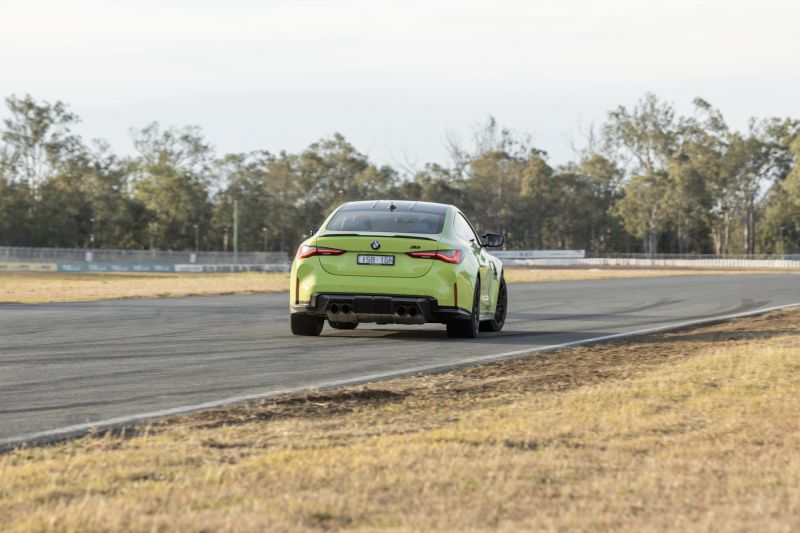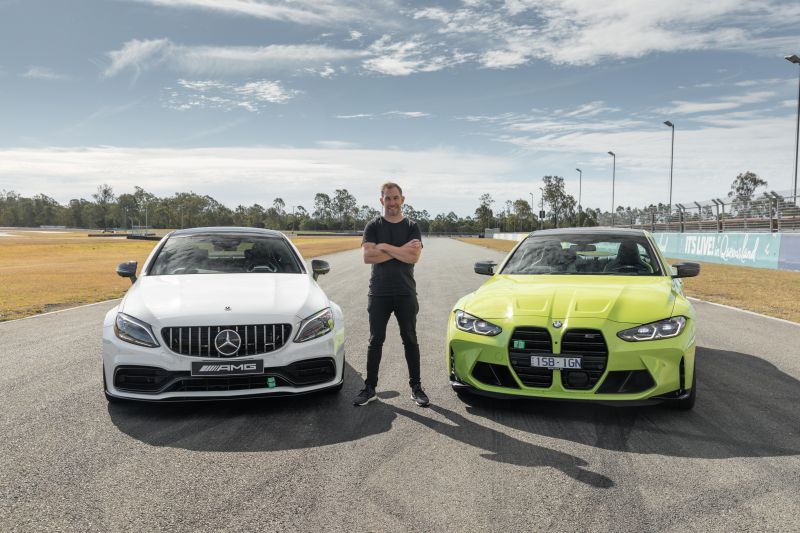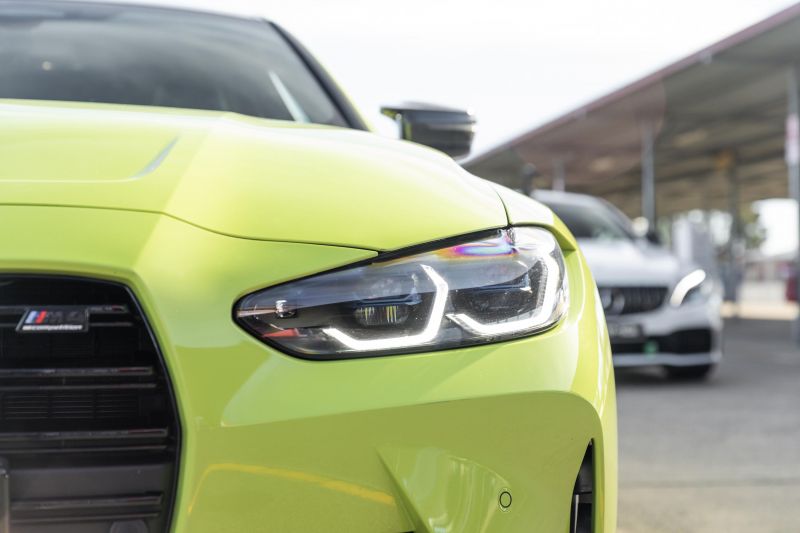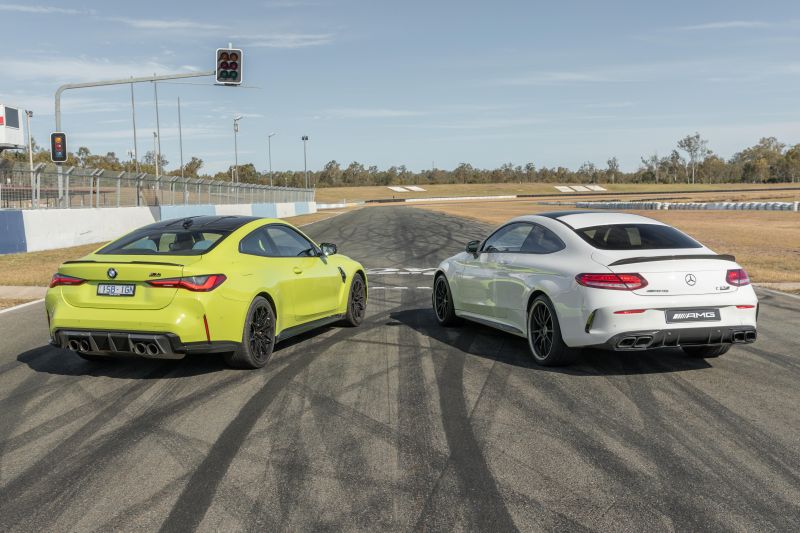With this being the final generation of the V8-powered Mercedes-AMG C63 S, it was a perfect opportunity to see who would take the title before the start of a new era.
These two rear-wheel drive beasts, and historical rivals, stack up so similarly on paper that I expected an epic battle on the track too. Would that be the case?
Yes, there has been so much talk about the looks of the BMW M4 Competition, but I wanted to put that to one side and focus purely on the driving experience and outright pace of these two incredible machines.
Track summary
Both of these cars come into this showdown as contenders to push quite a few other cars down the ranks on the CarExpert Leaderboard.
Looking at the performance numbers, you would expect top five to be the target. It would ultimately come down to which contender could transfer those numbers to the track best, via two heavily stressed rear tyres.
The Mercedes-AMG C63 S has always been king of the torque curve, with the BMW M4 Competition focused more on driver dynamics. Both factors are incredibly valuable in your driving experience and for on-track performance.
One would exceed all expectations.
Road summary
I have spent plenty of time with a Mercedes-AMG C63 S on the road in the past, and it’s hard to deny what a brilliant package it is. Instant power with a lively rear end, to keep you more than entertained while still offering everyday usability.
The BMW M4 is a vehicle I am not as familiar with, but quickly grew fond of, albeit in a different way. The M4 is asking to be driven hard all the time, it is almost impossible to just cruise along.
There was a certain sense of urgency the whole time and although I couldn’t say there was a huge difference in the ride quality between the two cars, the BMW M4 seemed a little more on edge, even when you didn’t really need it to be.
Engines
With numbers so similar, it’s amazing how differently each engine performs.
They each offer 375kW of power apiece, achieved at 6250rpm.
The Mercedes-AMG’s higher-displacement engine manages more torque: 700Nm from 2000 to 4500rpm, versus 650Nm for the BMW – albeit in the Bimmer’s case available over a wider peak band from 2750rpm to remarkably high 5500rpm.
The Mercedes-AMG’s 4.0-litre twin-turbo V8 power feels almost instant, as soon as you ask for it, it’s there and with so much torque you have to be ready to react straight away.
Being up a gear is the smartest way to deal with calming it down, but it is hard not to smile every time you press the throttle.
The BMW M4 Competition on the other hand, with its 3.0-litre twin-turbo inline-six, is a lot more focused on the upper end of the rev range. It has the driveability down low and then just continues that all the way to the shift point.
You really have useful power the whole way and even though it has less torque, the curve seems a lot wider and overlaps very smoothly with the power curve. This makes it less shocking as an experience, but more complete as a package.
Interestingly, it really seems BMW may have been slightly pessimistic with its numbers, or the power loss through the drive line is minimal, because the performance in a straight line was clearly at an advantage over the Mercedes-AMG.
The BMW M4 Competition consistently did low 4-sec 0-100km/h times, with a best of 4.09 seconds versus the manufacturer claim of 3.9 seconds. By contrast the Mercedes-AMG C63 S only managed 4.63 seconds against the same claim of 3.9 seconds.
If you’re just looking for sound and entertainment, the Mercedes AMG C63 S wins hands down, but the BMW M4 Competition’s engine is the more complete package.
Braking
As with the engine numbers, the braking numbers are very close, with only one metre and 0.09 of a second difference from 100-0km/h (BMW 34.94m in 2.7sec versus the Mercedes-AMG’s 36.08m in 2.81sec). Yet, the experiences were completely different.
Both vehicles had carbon-ceramic brakes optioned and were incredibly consistent on the track as you would expect.
The BMW M4 Competition did have the upper hand due to its brake pedal feel and control – as close as you could get to a race car feel, while still being useful everyday. The way I could modulate and control the release of the brakes on the way into the corner was absolutely spot on.
The Mercedes-AMG C63 S had a longer pedal travel and that just lost me a little bit of confidence. On the road you wouldn’t even notice this as a problem, just when it comes down to the detail of nailing your corner entry on the track, it makes it a bit more challenging.
Chassis
It’s starting to become clear that these two cars were really designed with two completely different philosophies in mind, and their respective chassis’ proved no exception.
The Mercedes-AMG C63 S has really good front grip, combined with a very stable and supported rear end. This balance makes it incredibly easy to slide and you have to be mindful of that all the time.
On corner entry you barely have to add any steering to get rotation started, the problem is the rear just wants to come around almost too easily and it is very difficult to attack without losing the rear end.
Despite it being so oversteer-focused, when you had the traction control on a reasonable level and managed the power delivery, you could really still push pretty hard. But I still had to be careful not to overdrive it.
Now the BMW M4 Competition was on another level, so much more precise and balanced. Everything feels connected and working in harmony, and I loved how controlled all the movements were.
The rear end would settle so nicely and control some of the shock going to the rear tyres as you went on throttle, and the front end was super precise without being over reactive. It was so easy to balance the car all the way through the corner and it was really up to the driver rather than the car to determine the outcome.
The great thing about both chassis’ is that the two manufacturers have not tried to hide their tendencies. Both actually gave great feedback and were incredibly controllable even when well beyond the limit.
Transmissions and differentials
There has been quite a big change for this generation of BMW M4, going away from the DCT and towards a more user-friendly eight-speed sports automatic. The Mercedes-AMG C63 S has a nine-speed multi-clutch transmission that fits somewhere between a DCT and automatic.
Both were excellent, and despite having more than enough gears to choose from, it never seemed that I was having to make too many shifts and I basically used the same gears on each corner across both cars.
On the track, I enjoyed the experience from the Mercedes MCT just that fraction more. It was more engaging to drive and felt a bit more reactive and slightly quicker with the shifts.
The only criticism of the Mercedes-AMG transmission is because the torque curve sits slightly lower in the rev range, I found that it didn’t fall into the peak torque on upshifts, which would hurt the acceleration a little bit.
The differentials in the two cars are both outstanding, yet achieve the result using different technology. The Mercedes-AMG C63 S uses a mechanical LSD, while the BMW M4 Competition uses an Active M Differential, which is electronically controlled.
They catch the slip in a controlled and subtle manner, which is a challenge given the level of torque being applied.
The BMW M4 Competition just edges out the Mercedes-AMG C63 S in this area, due to the progression at the early phase of locking. It was just a fraction more progressive in its control, which allowed me to really balance the car nicely.
Suspension
The Mercedes-AMG, despite being the more road-friendly car, was a bit more reactive on the track.
I went with the slightly softer Sport setting, not the fully aggressive Sport+, and still suffered a bit on the bumps. The rear suspension was relatively firm compared to the front, which gave the oversteer balance I spoke about with the chassis.
The BMW M4 Competition suspension is almost as good as it gets. It had the control I wanted, without any harshness, and although it was firm, it didn’t react off the bumps. This is so confidence inspiring as a driver and really enables you to attack and get away with little mistakes.
I also went for the slightly softer Sport suspension option in the BMW M4 Competition, which was the perfect compromise for the track we use.
Steering
The Mercedes-AMG C63 S edges out the BMW M4 Competition in this area. It gave more feedback through the wheel and is really nicely weighted.
Even though the BMW M4 Competition steering does lack a bit of feedback, it is incredibly precise and linear, meaning you have absolute control over the front end.
Wheels and Tyres
As is so often the case, the tyres that are fitted play a big part in the outcome of the test. Despite both cars running Michelin tyres, the BMW uses the track-focused Cup 2s where the Mercedes-AMG uses the more balanced Super Sports.
The Mercedes-AMG C63 S actually has slightly narrower front tyres – 255/35 R19 v 275/35 R19 – but doesn’t feel like it needs more front grip, because of the oversteer chassis balance. The rear tyre sizes are identical, at 285/30 R20.
You actually feel like you have to warm up the Cup 2 tyres on the BMW M4 Competition and they stayed incredibly consistent over the runs. The first lap was almost identical to the last one.
The Mercedes AMG C63 S is naturally hard on the rear tyres, and it came down to the first lap of each outing to get the best time. Even then BMW M4 Competition just had a grip advantage everywhere, due to the tyres.
Driver Aids (Electronics)
I think both manufacturers have done an amazing job with the driver aids.
The fact they both have adjustable traction control is so awesome. I could really dial them in for the track we were on, and it really brings some racing technology to road cars.
I had the confidence to turn the stability control off on both cars and just rely on the traction control to help if I got a bit too greedy on the throttle.
I never felt like either system was interfering with my driving, it was just there to support me an actually make the job of driving the cars fast, easier.
Cockpit (Ergonomics)
The Mercedes-AMG’s seats are comfortable and offer very good support on the track as well.
I absolutely love the wheel which is a bit out there with carbon and Alcantara, but its function, size and shape are spot on. Same thing with the mode buttons on the wheel, as well as the ability to adjust the traction control from the wheel when in Race mode.
The shift light is nice and clear, yet also subtle at the same time, which goes with the vibe of the car.
The interior of the BMW M4 Competition is so dramatically different to the Mercedes-AMG C63 S.
The seats are maybe my favourite of any road car seat, on a track. They are aggressive and comfortable: I was positioned low and angled back, without the slightest bit of movement when pushing hard. You also have a removable headrest piece, so your helmet doesn’t get pushed forward.
The BMW M steering wheel is just a bit thicker than I like and I would have preferred an Alcantara finish as my palms got pretty sweaty at the pace we were going. I do like the M buttons on the wheel, so that you can have pre-selected modes ready to go when you head out on the track.
Having the ability to adjust the traction control on the wheel would have been awesome, as you have to go into the settings to do this. The dash is really cool and modern, with nice clear shift lights and gear number, which are the two things I care about most.
Yet as good as the BMW M4 Competition seats are, the Mercedes-AMG C63 S’s interior is definitely a bit more liveable for everyday use.
Lap time
I am pretty sure you will have guessed which way this is heading, but there are no losers here. These are just two very well-engineered and exciting cars, that are on two very different paths.
The lap time the BMW M4 Competition managed blew my mind, as did the experience of driving it on the track. 55.55 seconds puts it into third place on the CarExpert Leaderboard, just over half a second behind the Porsche 911 GT3 RS – and I found it even easier to get a lap time out of than the Porsche.
The Mercedes-AMG C63 S did a very respectable 57.33-second lap, placing it sixth on the leaderboard, in between the BMW M8 Competition and the BMW M550i.
The tyres obviously played a role in some of the time difference, but even so the BMW M4 Competition is on another level on the track.
The ultimate answer comes down to what you are after in a car. The BMW M4 Competition is a knife-edge race car that you can drive on the road, the Mercedes-AMG C63 S is an epic road car that can handle some track outings as well. Both are incredibly well engineered and you can’t go wrong either way.
I still can’t get over how quick that M4 was, and I like winning, so that’s my pick!
Atko’s 3
Mercedes-AMG C63 S:
- This car is born to oversteer, throttle control is key to doing a good lap
- Use a gear higher to manage to torque delivery
- If you want to track this car, go for a tyre upgrade
BMW M4 Competition:
- Use the technology to your advantage, the traction control system really helps
- Remember to warm up the tyres, these are not your ordinary road tyres
- You must take it to the track to really experience what BMW has created here
BMW M4 Competition
Pros:
- Unbelievable dynamics on the track
- Brake control as good as it gets
- Engine outperforms expectations
Cons:
- Steering could have more feedback
- ‘Sports Automatic’ transmission not as exciting as DCT
- Feels out of place on the road at normal speeds
Mercedes-AMG C63 S
Pros:
- Epic engine that sounds amazing
- MCT transmission is user-friendly and super sharp
- Great balance of comfort and performance
Cons:
- Standard tyres let it down on the track
- Oversteer balance makes it hard to do a quick lap
- Brakes miss control at the limit
Click the images for the full gallery
MORE: Everything BMW M4
MORE: Everything Mercedes-AMG C63

